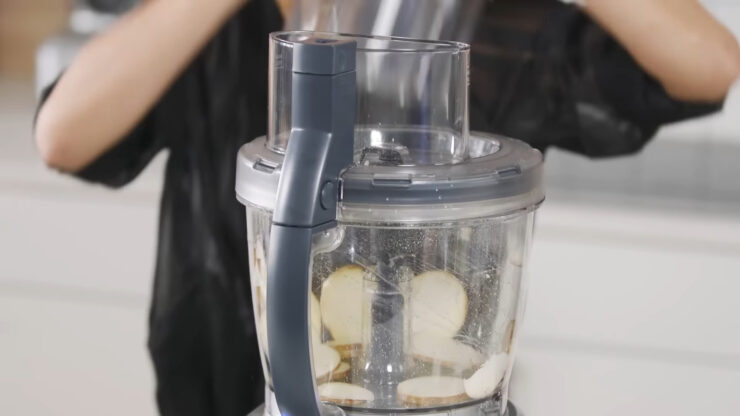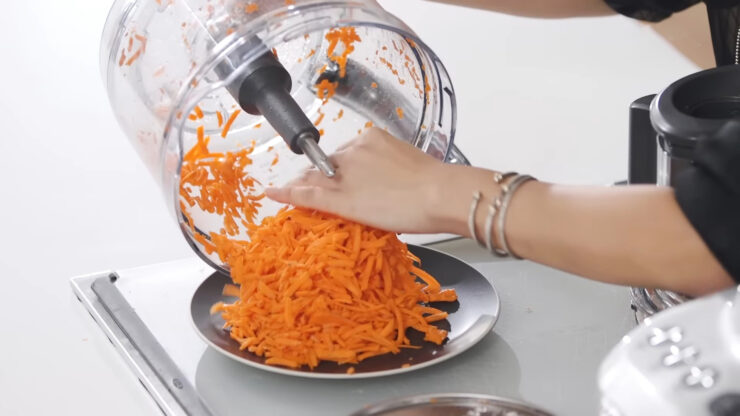A food processor is a versatile kitchen appliance that can be used for a variety of tasks, from chopping and slicing to kneading dough and pureeing fruits and vegetables. However, not everyone has a food processor, and sometimes they can be expensive. If you don’t have one or can’t afford it, never fear!
There are plenty of substitutes you can use that will get the job done just as well. In this blog post, we will explore some of the best substitutes for food processors. From blenders to knives to good old-fashioned elbow grease, read on to find out which option is best for your needs.
The different types of food processors
Food processors come in all shapes and sizes, from small handheld devices to large countertop models. There are also many different types, each with its own unique set of features and capabilities. Here is a look at some of the most popular types of food processors on the market:
- Blenders are one of the most versatile and commonly used types of food processors. They can be used to create smoothies, soups, sauces, and more. Most come with a built-in ice crusher function, making them perfect for making frozen drinks.
- Food choppers are smaller and more compact than blenders, making them ideal for chopping vegetables or nuts. Some also have a grating or shredding attachment, which can be used to create shredded cheese or vegetable noodles.
- Food processors are larger and more powerful than either blenders or food choppers. They can be used to chop vegetables, grind meat, knead the dough, and much more. Most of them come with a variety of attachments, such as shredding discs and slicing blades, which make them even more versatile.
How to use it

If you are new to using a food processor, here are some tips on how to get the most out of this appliance.
When using the chopping blade, start with larger pieces of food and pulse until they are the desired size. For shredding, use firm vegetables or cheese. Put them in the processor fitted with the shredding attachment and process until they are the desired consistency.
To puree, add soft fruits or cooked vegetables to the food processor bowl fitted with the appropriate blade. Start with small amounts of food and gradually add more until it reaches the desired consistency.
To make the dough, add flour, salt, butter (or other fat), and liquid to the bowl fitted with the dough blade. Pulse until the mixture comes together in a ball. If needed, add more liquid a little at a time until the dough is moist but not too sticky.
Then turn out onto a floured surface and knead by hand for a minute or two to form a smooth dough ball before proceeding with your recipe.
The benefits
There are many benefits to using a food processor, including the ability to save time and energy when preparing meals. They can chop and dice vegetables and fruits in seconds, which can be a huge time saver when you’re trying to make a healthy meal.
Additionally, they can help you create healthier meals by allowing you to easily add more fruits and vegetables into your diet. And if you’re trying to eat less processed foods, a food processor can also help with that by allowing you to make homemade sauces, soups, and dips.
The drawbacks

While there are many benefits to using a it, there are also some drawbacks. One of the biggest is that food processors can be expensive, so if you’re on a budget, you may want to consider another kitchen appliance.
In addition, food processors can be difficult to clean, so if you’re not careful, they can become a breeding ground for bacteria. If you’re not careful, you can easily overprocess your foods, which can result in a mushy or unappetizing final product.
Substitutes for food processors
There are many substitutes you can use for food processors, depending on what you need to use it for. If you need to chop or dice vegetables, a good sharp knife and cutting board will do the trick.
For grinding spices or nuts, a mortar and pestle can be used. If you need to purée fruits or vegetables, a blender is a good substitute. And finally, if you need to knead dough, your best bet is to use your hands.
Blender vs food processor
A blender and a food processor both have their own unique capabilities and uses. So, which one is better?
A blender is great for making smoothies, soups, and sauces. It can also be used to chop vegetables or fruits. On the other hand, a food processor is ideal for tasks such as chopping nuts, grating cheese, or slicing vegetables. It can also be used to make dough or pureeing fruits and vegetables.
So, which one should you get? If you’re looking for an appliance that can do it all, a food processor is the way to go. However, if you’re just looking for something to make smoothies and soups, a blender will suffice.
Mortar and Pestle

A mortar and pestle is a kitchen tool used to grind, pulverize, and crush spices and other ingredients. The mortar is a bowl, usually made of ceramic, stone, or wood, while the pestle is a handheld tool that is used to pound or grind the ingredients in the mortar.
Mortars and pestles have been used since ancient times to prepare food. In many cultures, they are still used today. Particularly, they are popular in Asia, Africa, and Latin America.
Mortars and pestles come in a variety of sizes. The size you need will depend on the amount of ingredients you need to grind. Smaller mortars and pestles are great for grinding spices, while larger ones can be used to make pastes or sauces.
If you’re using a mortar and pestle to grind spices, it’s important to choose one that is made from a non-porous material like granite or marble. This will prevent the spices from absorbing into the stone and affecting the flavor of your food.
Conclusion
So, there you have it — a list of food processor substitutes that you can use to make your favorite recipes. While a food processor is definitely a handy kitchen appliance to have, it’s not essential. With a little creativity and some elbow grease, you can make just about anything in the kitchen without one.

